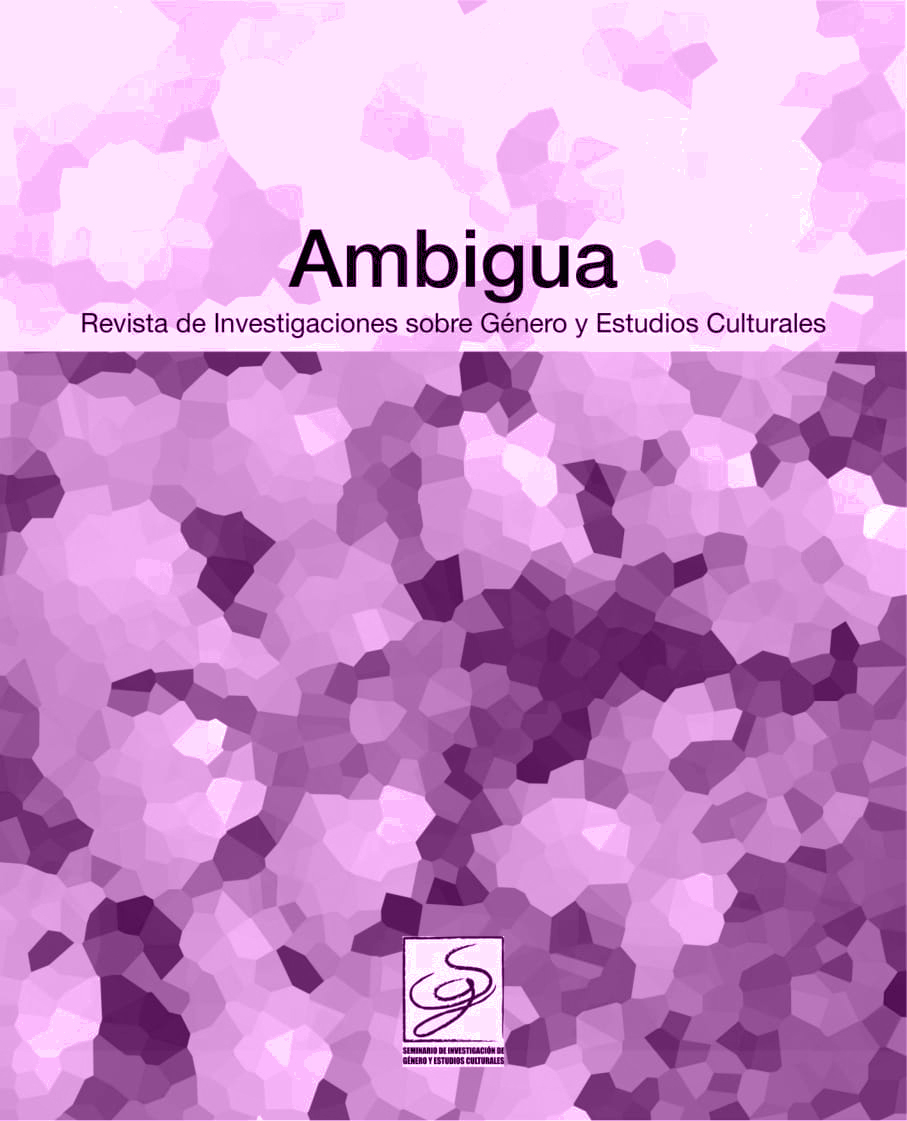V as violence, V as vengeance
The resistance of women in Paola Drigo’s novel Maria Zef
DOI:
https://doi.org/10.46661/ambigua.4822Keywords:
violence, vengeance, rape, women’s writing, Paola DrigoAbstract
Paola Drigo (1876-1938) was an important and original voice of Italian literature and many critics consider her to be one of the most important writers of the first half of the 20th century. The main themes that the writer faced during her literary production seem very different: we go from an initial phase in which the description of the sparkling and empty environments of the rich bourgeoisie in which she lived prevails, to a more mature phase in which the writer places humble, poor and marginal women at the center of her stories, weakened by fate and overcome by misfortunes.
When she published Maria Zef in 1936, the novel caused a stir among the Italian literary community, because it dealt with subjects, considered taboo, harshly and openly, with an evident desire for denunciation and a sometimes disarming simplicity.
The plot, actually quite stark, revolves around three female figures who are at the center of the narrative plot and from whose relationships the fundamental dynamics of the novel originate. However, this simplicity is only apparent, since the novel proceeds intelligently through the presentation of some clues that will lead to a final epiphany, which will be followed by a destructive and decisive gesture, a gesture widely justified by the premises. The ending is worthy of a Greek tragedy: the fatal component dominates, the intertwining of destinies, fallen in luck to ignorant humans, and inevitably death assumes the dimension of the event necessary to satisfy the thirst for a just revenge.
Downloads
References
AZZOLINI, Paola. "Il silenzio del bosco tagliato: lettura di Maria Zef". En Paola Drigo settant'anni dopo, Beatrice Bartolomeo & Patrizia Zambon (Eds.), 237-250. Pisa: Serra, 2009.
BIASIN, Gian-Paolo. "Lassù sulle montagne". En Augustus A. Mastri (Ed.), The Flight of Ulysses. Studies in Memory of Emmanuel Hatzantonis. Annali d'Italianistica. Studi e testi, 1 (1997), 299-313.
BOCCELLI, Arnaldo. "Scrittori d'oggi: Paola Drigo, Maria Zef". En Nuova antologia, LXXII, 1574 (septiembre-octubre 1937), 466-468.
--------. "Scrittori d'oggi". En Nuova antologia, LXXIII, 1581 (1 febrero 1938), 350-351.
BOERO, Silvia. Vite parallele di Paola Drigo e Paola Masino: Voci femminili di dissenso nella letteratura del periodo fascista. Diss. University of North Carolina at Chapel Hill, 2005.
BRIGANTI, Antonella. Protagoniste e vittime: le donne e la scrittura. Milán: ESA, 1989.
CAGNOLATI Antonella & Covato Carmela (Eds.). La scoperta del genere tra autobiografia e storie di vita. Sevilla: Benilde, 2016.
CARLINI, Sara. "Maria Zef: il grande romanzo di una scrittrice "minore" (Paola Drigo)". En Otto/Novecento, XXXI, 2 (2007), 77-100.
CORTI, Maria. "Paola Drigo, Maria Zef". En Alfabeta, V, 53 (1983): 5-9.
https://doi.org/10.2466/pr0.1983.53.2.427
DORIGO, Ermes. "Per Maria Zef". En Alfabeta, VI, 67 (1984): 9-11.
DRIGO, Paola. Racconti. Padova: Il Poligrafo, 2006.
--------. Maria Zef. Padova: Il Poligrafo, 2011.
GALLO, Andrea. "Riscoperta di Paola Drigo". En Forum Italicum, XLI, 1 (2007): 225-229.
https://doi.org/10.1177/001458580704100114
--------. "Redescubrimiento de las autoras italianas del siglo XIX-XX: el caso de Paola Drigo". En Cuaderno Internacional de Estudios Humanísticos y Literatura, VII, volumen extraordinario (2010): 60-66.
GHEZZO, Flora Maria. Corpi imprigionati: scritture femminili del ventennio. Diss. Rutgers University, 2001.
GILLET, Louis. "Littérarure étrangères. Paola Drigo". En Revue de deux Mondes, CVIII, 2 (15 enero 1938): 443-447.
GUAGNINI, Elvio. "Paola Drigo". En La fama e il silenzio. Scrittrici dimenticate del primo Novecento, Francesco De Nicola & Pier A. Zanon (Eds.), 31-39. Venecia, Marsilio, 2002.
ILLIANO, Antonio. "Realismo tragico di Maria Zef". En A. Illiano, Invito al romanzo d'autrice '800-'900: da Luisa Saredo a Laudomia Bonanni, Fiesole, Cadmo, 2001: 81-94.
MAROLA, Barbara. "Paola Drigo". En Fuori norma. Scrittrici italiane del Novecento: Vittoria Aganoor, Paola Drigo, Rosa Rosà, Lina Pietravalle, Barbara Marola, Maria Teresa Munini, Rosa Regio, Brbara Ricci (Eds.), 69-133. Ferrara, Tufani, 2003.
NOZZOLI A., La parete di carta: scritture al femminile nel Novecento italiano. Verona: Gutenberg, 1989.
PARISI, Luciano. "Il silenzio di Paola Drigo". En Rivista di letteratura italiana, XXXIV, 1 (2016): 79-96.
PONTELLO Negherbon, M. Elisabetta. "Una scrittrice veneta: Paola Drigo". En Aevum, XXXVII, 5-6, (septiembre-diciembre 1963): 502-526.
SANTORO, Anna. "Paola Bianchetti Drigo". En A. Santoro, Il Novecento. Antologia di scrittrici italiane del primo ventennio, Roma, Bulzoni, 1997: 111-116.
ULIVIERI, Simonetta (Ed.). Le donne si raccontano. Autobiografia, genere e formazione del sé. Pisa: ETS, 2019.
ULTSCH, Lori. "La genealogia del personaggio e le 'figure in penombra' di Paola Drigo". En L'Anello che non tiene, XV, 1-2 (2003): 31-57.
VALGIMIGLI, Manara. "Paola Drigo". En Uomini e scrittori del mio tempo. Florencia: Sansoni, 1943: 197-219.
ZAMBON, Patrizia. "Paola Drigo". En Le stanze ritrovate. Antologia di scrittrici venete dal Quattrocento al Novecento, Antonia Arslan, Adriana Chemello & Gilberto Pizzamiglio (Eds.), 256-264. Venecia: Eidos, 1991.
--------. "Nota biografica". En Paola Drigo, Racconti. Padova: Il Poligrafo, 2006, 191-193.
--------. "Paola Drigo, le opere e i giorni". En Paola Drigo, Maria Zef. Padova: Il Poligrafo, 2011, 27-44.
Downloads
Published
How to Cite
Issue
Section
License
Copyright (c) 2020 Antonella Cagnolati

This work is licensed under a Creative Commons Attribution-NonCommercial-ShareAlike 4.0 International License.
The authors agree with the following:
1. Authors retain copyright and grant the journal right of first publication with the work simultaneously licensed under a license Attribution-NonCommercial-ShareAlike 4.0 International (CC BY-NC-SA 4.0) that allows others to share the work with an acknowledgement of the work's authorship and initial publication in this journal.
2. Authors are able to enter into separate, additional contractual arrangements for the non-exclusive distribution of the journal's published version of the work (e.g., post it to an institutional repository or publish it in a book), with an acknowledgement of its initial publication in this journal.
3. Authors are permitted and encouraged to post their work online (e.g., in institutional repositories or on their website) prior to and during the submission process, as it can lead to productive exchanges, as well as earlier and greater citation of published work (See The Effect of Open Access).









